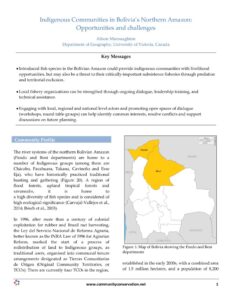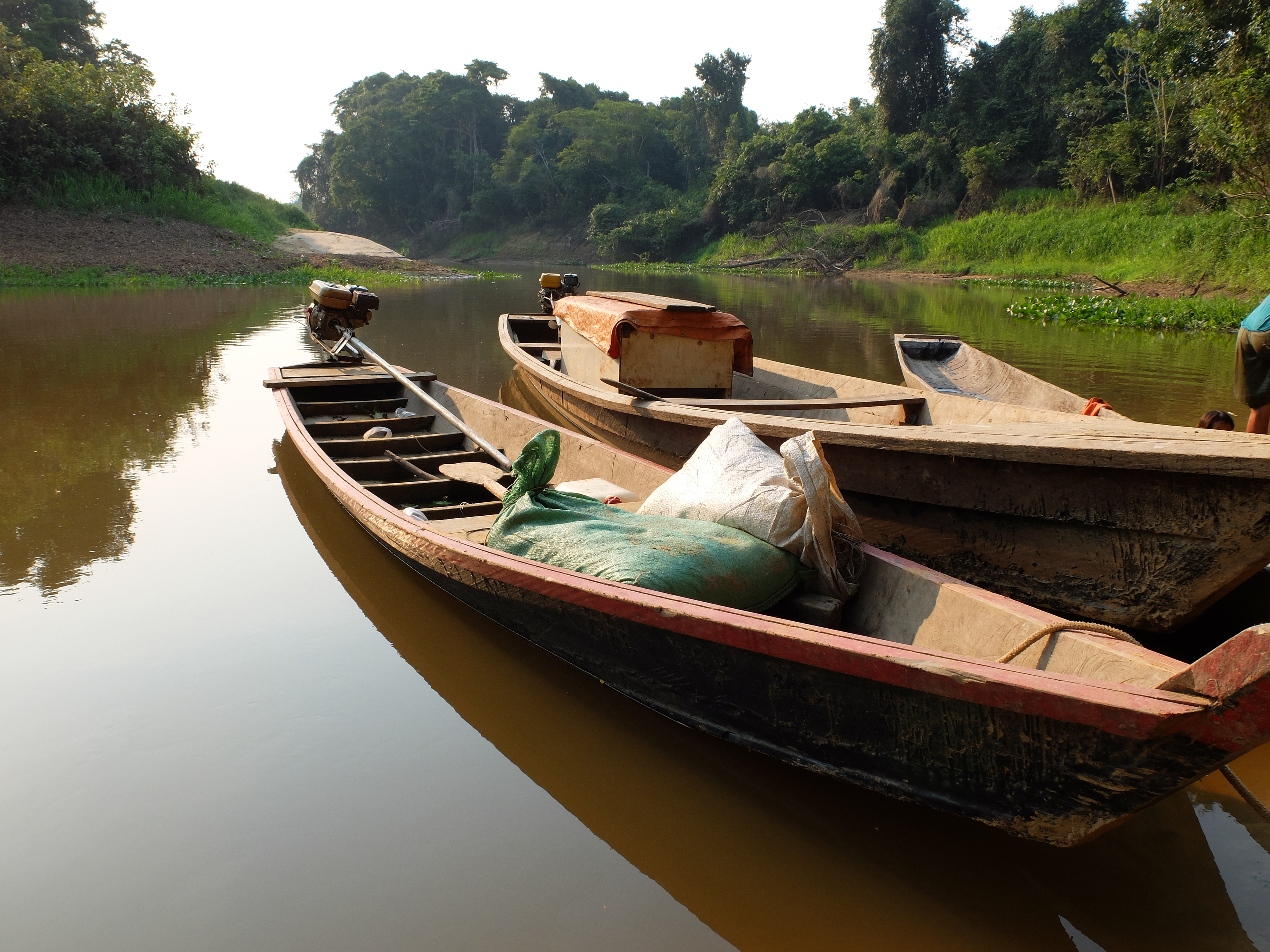
09 May Bolivia’s Northern Amazon
Alison Macnaughton
Key Messages
• Introduced fish species in the Bolivian Amazon could provide Indigenous communities with livelihood opportunities, but may also be a threat to their critically-important subsistence fisheries through predation and territorial exclusion.
• Local fishery organizations can be strengthed through ongoing dialogue, leadership training, and technical assistance.
• Engaging with local, regional and national level actors and promoting open spaces of dialogue (workshops, round table groups) can help identify common interests, resolve conflicts and support discussion on future planning.
Community Profile
The river systems of the northern Bolivian Amazon (Pando and Beni departments) are home to a number of Indigenous groups (among them are Chácobo, Pacahuara, Takana, Cavineño and Esse Eja), who have historically practiced traditional hunting and gathering. A region of flood forests, upland tropical forests and savannahs, it is home to a high diversity of fish species and is considered of high ecological significance(3,6).
In 1996, after more than a century of colonial exploitation for rubber and Brazil nut harvesting, the Ley del Servicio Nacional de Reforma Agraria, better known as the INRA Law of 1996 for Agrarian Reform, marked the start of a process of redistribution of land to Indigenous groups, as traditional users, organised into communal tenure arrangements designated as Tierras Comunitarias de Origen (Original Community Territories, or TCOs). There are currently four TCOs in the region, established in the early 2000s, with a combined area of 1.5 million hectares, and a population of 8,200 people spread out in 93 communities, mostly located close to rivers or lakes with limited access to regional urban centres.
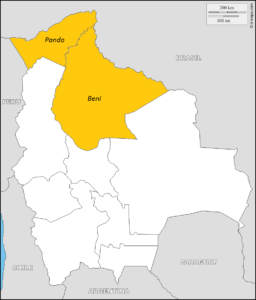
Figure 1: Map of Bolivia showing the Pando and Beni departments(10)
The main livelihood activities in TCOs include seasonal harvesting of Brazil nuts and other non- timber forest products, family-based agriculture (yucca, plantain), and year-round hunting and fishing.
Regulations created at the level of the TCO establish which types of resources may be used for subsistence and/or commercial use, and recognise each community’s areas to fish, hunt and harvest, with shared-access arrangements, where necessary. In most cases, there is also a need to develop more specific local and regional resource management plans.
Conservation and Livelihood Challenges
Illegal entry by outsiders for unregulated activities, such as commercial logging and fishing, poses a significant threat to resources. Additionally, high rates of poverty, food insecurity and vulnerability exacerbate local challenges(7).
Fisheries based on abundant and diverse native fish are a cornerstone of local subsistence for most communities and a secondary livelihood for some. However, the future of the native species fishery is somewhat uncertain, due in large part to an introduced species, paiche (Arapaima gigas). The world’s largest scaled fish, paiche was brought in 1965 to the headwaters of Madre de Dios River (Peru)(2). This air-breathing and fast-growing fish has spread into a significant portion of the Bolivian Amazon(3) and is now relatively abundant in lakes and river eddies. In other parts of the Amazon Basin, where it is native, paiche is an iconic species with high commercial value, a history of over-exploitation and some successful community-based conservation initiatives(4). Although paiche are not native to Bolivia, they remain sensitive to fishing pressure.
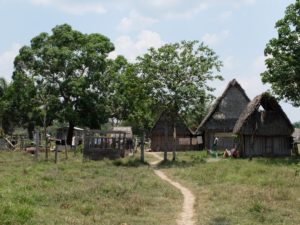
Figure 2: Traditional houses in Baketi community, TCO Cavineño, 2015), and low returns to producers.
Since the 1990s, unmanaged commercial fisheries in the Bolivian Amazon have been rapidly increasing; current production is estimated to be upwards of 7,000 tonnes per year. The rapid expansion is largely attributed to increasing paiche fisheries.
To date, few Indigenous communities take part in the commercial fishing of paiche on a regular basis, despite the need for income-generating opportunities and high, unsatisfied demand for fish in regional markets. This behaviour may be due to a variety of factors, including cultural norms, distance from and access to markets, inadequate equipment (nets), poor access to cold-storage (ice) and low returns to producers.
Urban-based fishers from the main regional port of Riberalta now target paiche almost exclusively and sometimes invade TCOs to access the lakes where paiche is most abundant. Such activities have contributed both to conflicts and to new opportunities for trade, although equity remains a concern(8). For TCOs, paiche could be a livelihood opportunity, but may also be a threat to critical subsistence fisheries through predation and territorial exclusion.
Community Initiatives
Since 2011, indigenous communities have worked with researchers from the Asociación Faunagua, World Fisheries Trust, and the University of Victoria (Canada), to better understand the fisheries situation, and identify pathways to improve livelihood and food security in the region.
Figure 3: Explaining local fishing areas, catch and effort, community workshop, TCO Chácobo, 2015
Much of this work has focused on the paiche; providing key information on abundance and impacts, as well as potential for development. So far, these efforts have provided important information on:
- Nutritional status and food security of rural and urban populations and key determinants, including the contributions of fish(1);
- Fisheries and other livelihood activities, and local perspectives about paiche; and
- Fishery value chains, and mechanisms to improve transparency and promote greater economic equity between fishers, middlemen and markets(7,5)
Figure 4: Mapping the spread of the introduced paiche fish, community workshop, TCO Chácobo 2015
There have also been a range of practical initiatives including:
- Pilot initiatives for value-added fish production, for example the establishment of a cooperative in one of the indigenous communities, where paiche fillets and skins (for leather production) are produced and sold at improved prices;
- Strengthening local fisheries organizations through ongoing dialogue, leadership training, and providing technical assistance, e.g. consolidation of the regional fishers association; and
- Engaging with local, regional and national level actors and promoting open spaces of dialogue (workshops, round table groups) to identify common interests, resolve conflicts and discuss future planning(8).
Practical Outcomes
Indigenous governments in the region were able to express concerns and priorities directly to the national government through a national multi- stakeholder workshop held to discuss issues and opportunities surrounding paiche. This was also an opportunity to meet with representatives of commercial fishing.
Subsequently, the Ministry of Environment passed an administrative resolution for paiche fishery regulation and management, authorising paiche fishing in protected areas (PA) and TCOs as a conservation measure to protect native fauna.
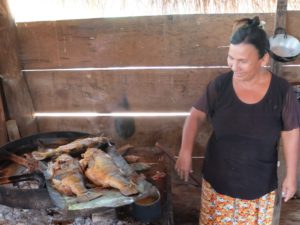
Figure 5: Preparing roasted tucunaré (peacock bass), a traditional dish, TCO Cavineño, 2015
While the presence of paiche and associated concerns about how to manage them has contributed to a significant increase in public attention to the fisheries sector in Bolivia, there is still a need for greater attention to the specific situation of Indigenous fisheries. Notably, in terms of development and implementation of resource management plans within the current TCO system, including monitoring. Enforcement of exclusive access to aquatic resources must also be improved to better protect resources and/or benefits to Indigenous people.
Specific needs for the Indigenous communities include:
- Capacity-building for communities and local organisations to identify and articulate local needs and priorities for development and conservation.
- Development and implementation of resource management plans and other governance tools at a local level.
- More effective engagement in regional planning.
- Support for greater transparency, communication and cooperation between agencies responsible for regulating fishing and fish markets.
- Improving returns to fishers, for example through value-added opportunities or improved pricing structure.
Figure 6: Returning with the day’s catch, TCO Cavineño, 2015
References
- Baker-French, S.R. (2013). Food Security and Nutritional status in Fishing Communities in Bolivia’s Northern Amazon: Results of a Household Survey. Master’s thesis (Human Nutrition). University of British Columbia, Canada.
- Carvajal-Vallejos, F.M., Van Damme, P.A, Cordova, L. and Coca, C. (2011). ‘La introducción de Arapaima gigas (paiche) en la Amazonía boliviana’ (The introduction of Arapaima gigas (paiche) in the Bolivian Amazon). In: P.A. Van Damme, F.M. Carvajal-Vallejos, J. Molina (eds.), Los peces y delfines de la Amazonía boliviana: habitats, potencialidades y amenazas, Chapter 15, pp. 367–396. Cochabamba, Bolivia: INIA, Imprenta Unicornio. Available at: https://www.academia. edu/1434883/La_introducci%C3%B3n_de_Arapaima_ gigas_paiche_en_la_Amazon%C3%ADa_boliviana
- Carvajal-Vallejos. F.M., Bigorne, R., Zeballos Fernández, A.J., Sarmiento, J., Barrera, S., Yunoki, T., Pouilly, M., Zubieta, J., De La Barra, E., Jegú, M. et al. (2014). ‘Fish- AMAZBOL: a database on freshwater fishes of the Bolivian Amazon’. Hydrobiologia 732: 19–27. Available at: https://doi. org/10.1007/s10750-014-1841-5
- Castello L., Stewart, D.J. and Arantes, C.C. (2011). ‘Modeling population dynamics and conservation of arapaima in the Amazon’. Reviews in Fish Biology and Fisheries 21: 623–640. Available at: https://doi.org/10.1007/s11160-010-9197-z
- Coca Méndes, C., Rico López, G., Carvajal Vallejos, F., Salas Peredo, R., Wojciechowski, J.M. (2012). La Cadena de Valor del Pescado en el Norte Amazónico de Bolivia: la contribución de especies nativas y de una especie introducida (el paiche – Arapaima gigas) (The Fish Value Chain in the Northern Amazon of Bolivia: the contribution of native species and an introduced species (the paiche– Arapaima gigas). La Paz, Bolivia: Embajada Real de Dinamarca, IDRC, Fundación PIEB. Available at: https://www. pecesvida.org/content/4-publicaciones/2-publicaciones- tecnicas/14-la-cadena-de-valor-del-pescado-en-el-norte- amazonico-de-bolivia-contribucion-de-especies-nativas- y-de-una-especie-introducida-el-paiche-arapaima-gigas/ cocaal.2012-cadena-de-valor-del-pescado.pdf
- Ibisch, P., Chiv, J., Espinoza, S. and Araujo, N. (2003). ‘Hacia un mapa del estado de conservación de los ecosistemas de Bolivia’ (Towards a map of the state of conservation of Bolivia’s ecosystems). In: P. Ibisch and G. Mérida (eds.), Biodiversidad: La riqueza de Bolivia. Estado de conocimiento y conservación, pp. 264–272. Santa Cruz de la Sierra, Bolivia: Ministerio de Desarrollo Sostenible, Editora FAN.
- Macnaughton. A.E., Rainville, T.K., Méndez, C.I.C, Ward, E.M., Wojciechowski, J.M., Carolsfeld, J. (2016). Gender transformative approaches with socially and environmentally vulnerable groups: Indigenous fishers of the Bolivian Amazon. In: J. Njuki, J. R. Parkins, A. Kaler (eds.), Transforming Gender and Food Security in the Global South, Chapter 9, pp. 217–240. London, UK: Routledge and International Development Research Council. Available at: https://doi. org/10.4324/9781315564111
- Salas, R. and Macnaughton, A. (2015). Improving governance in fisheries and fish farming in the Bolivian Amazon basin (Stories of Change) [online]. Available at: https://www. idrc.ca/sites/default/files/sp/Docume nts EN/Improving- governance-fisheries-fish- farming-Bolivia.pdf (available in Spanish version)
Acknowledgements
This work was supported by Peces para la vida (Amazon Fish for Food Project), through the Canadian International Food Security Research Fund, a programme of Canada’s International Development Research Centre (IDRC) and Global Affairs Canada. The author would like to acknowledge the Asociación Faunagua, in partnership with FEUPECOPINAB (Federation of Fishermen, Fish Sellers and Aquaculturists of the Bolivian North Amazon) and the fishers and communities of TCOs Chácobo-Pacahuara, Cavineño, Tacana-Cavineño and Territorio Multiétnico II (TIM II) who are leading efforts together towards more sustainable fisheries and improved livelihoods in the region.



